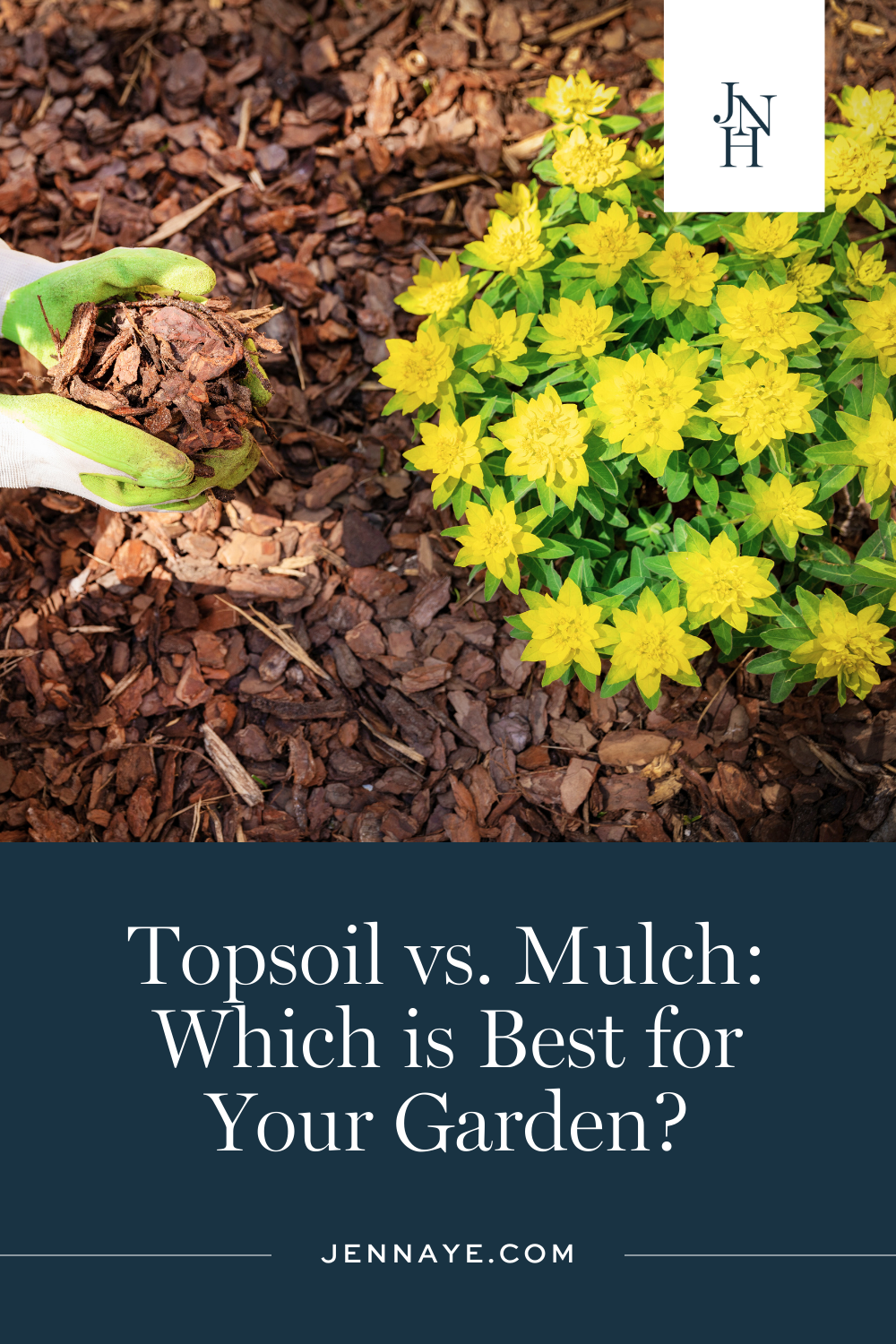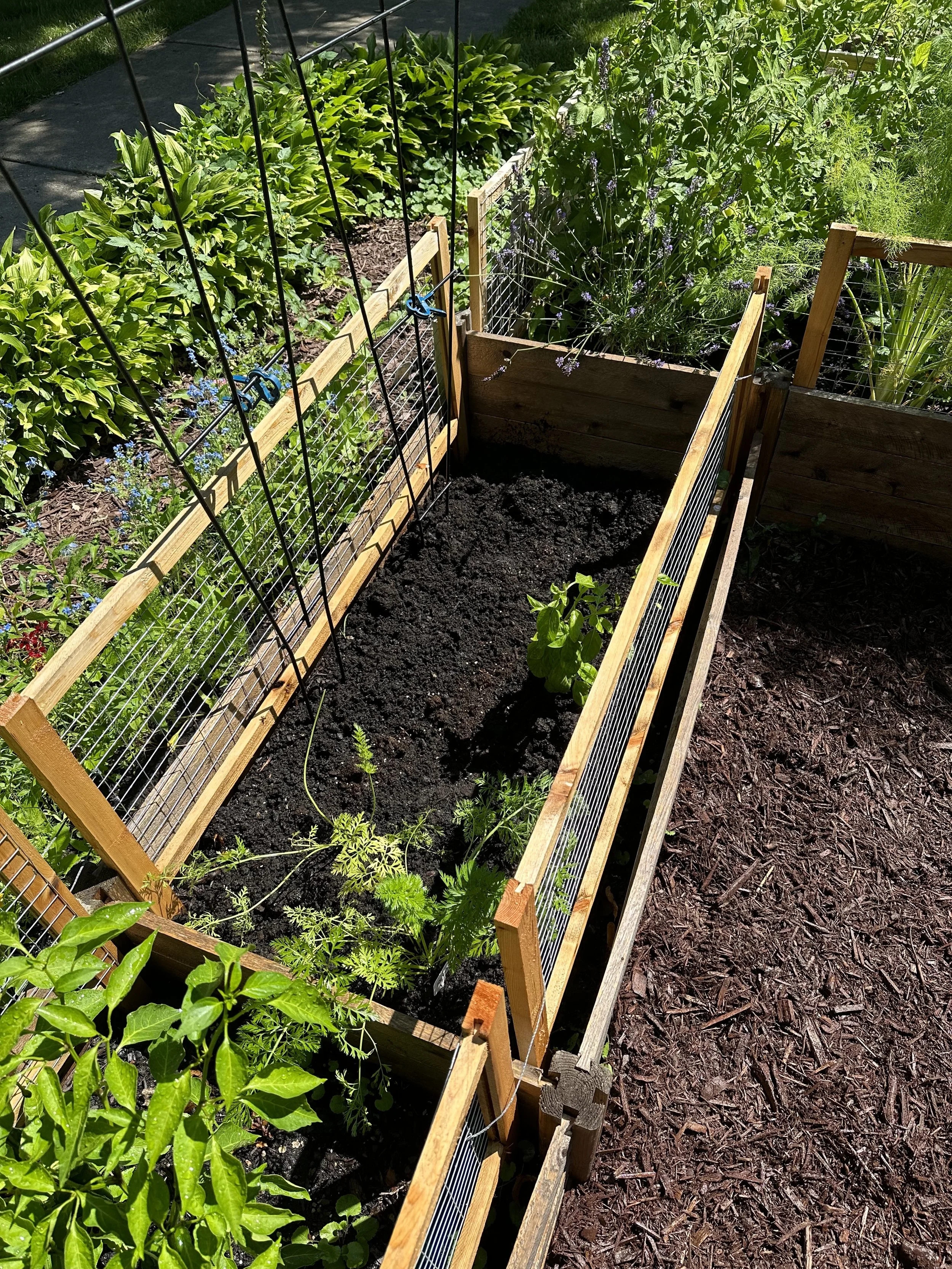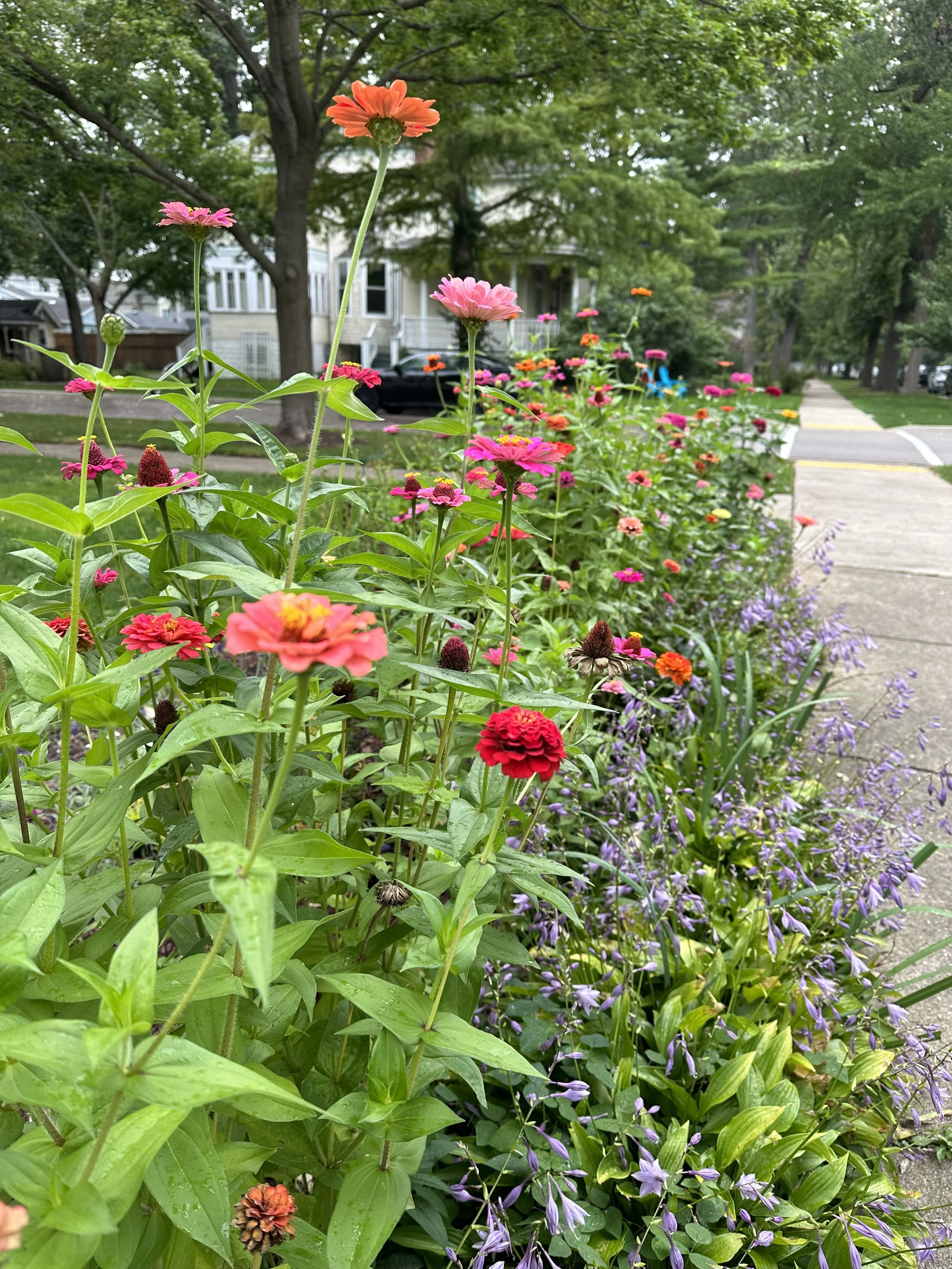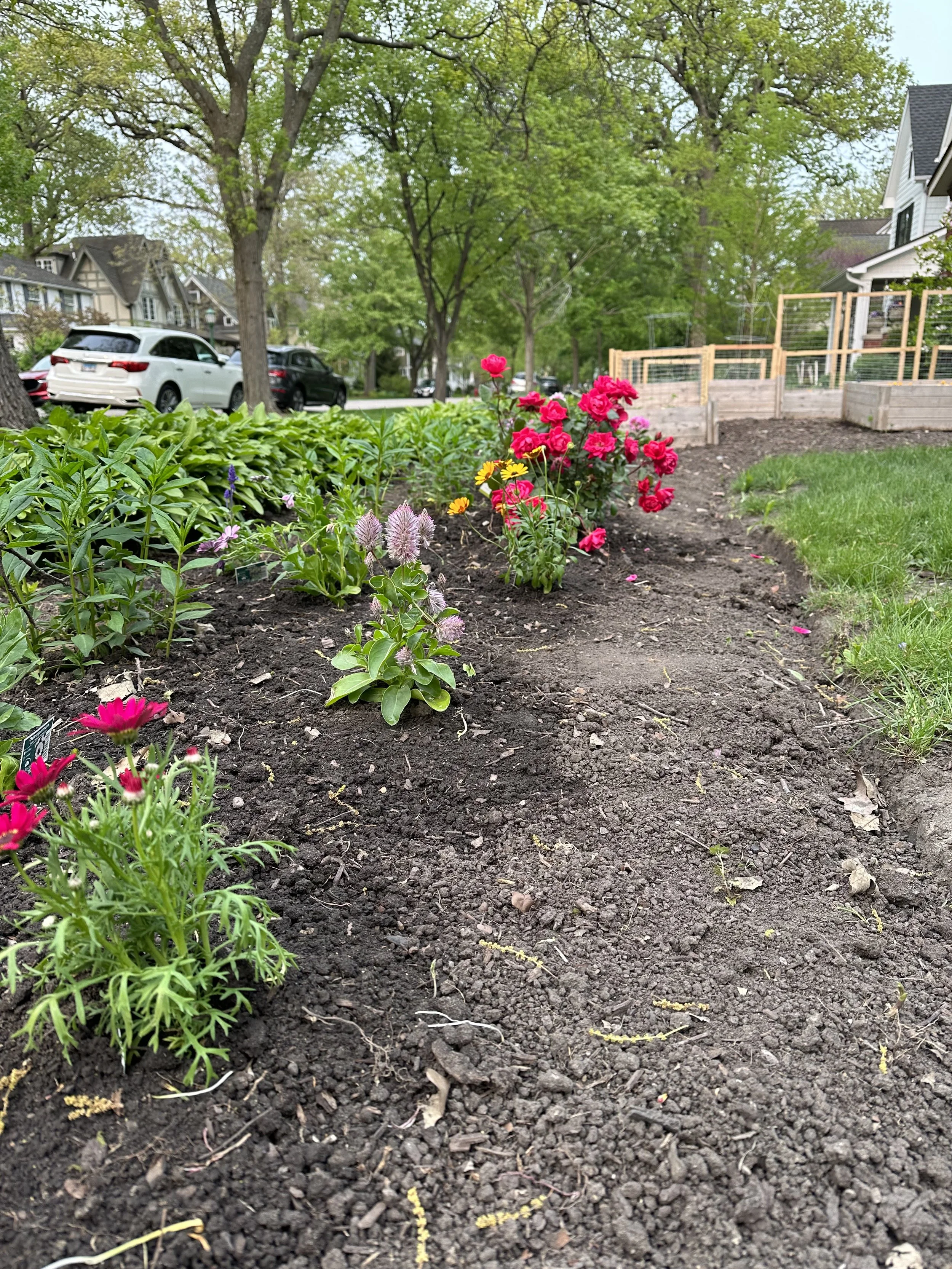Topsoil vs. Mulch: Understanding Their Roles in Your Garden
Topsoil vs. Mulch: Understanding Their Roles in Your Garden
Gardening can be both rewarding and challenging. One common question among home gardeners is understanding the differences between topsoil vs. mulch and how to use them effectively.
In this post, we’ll explore the key differences, uses, and benefits of topsoil and mulch, giving you all the info you need for a garden that thrives all summer long!
Understanding the Differences Between Topsoil and Mulch
What is Topsoil?
Topsoil is the uppermost layer of soil, typically rich in organic material and essential nutrients. This top layer of soil is vital for plant growth and is often used to improve soil quality in gardens and landscapes.
Composition of Topsoil
Topsoil is composed of a mixture of sand, silt, clay, and organic matter. The quality of topsoil can vary, but good topsoil contains a high concentration of organic material, which enhances soil fertility and supports healthy plant growth.
Uses of Topsoil
Top soil is used for:
Improving Soil Quality: Enhances the nutrient content and structure of existing soil.
Creating New Garden Beds: Provides a fertile base for planting.
Filling Low Spots: Levels uneven areas in a yard or garden.
Lawn Care: Supports grass seeds and helps establish a new lawn.
What is Mulch?
Mulch is any material spread over the soil surface to retain moisture, suppress weeds, and improve soil conditions. Mulch can be organic, like wood chips and grass clippings, or inorganic, such as decorative stones placed on top of the soil.
Types of Mulch
Organic Mulch: Includes materials like bark mulch, wood chips, grass clippings, and organic compost. These materials decompose over time, adding nutrients to the soil.
Inorganic Mulch: Includes materials like rubber mulch and stones, which do not decompose but provide benefits such as weed suppression and soil moisture retention.
Uses for Mulch
Mulch is used for:
Water Retention: Helps keep the soil moist by reducing evaporation.
Weed Suppression: Prevents weed growth by stopping the seeds from germinating and growing.
Temperature Regulation: Insulates the soil, keeping it cooler in summer and warmer in winter.
Erosion Control: Protects the soil surface from erosion caused by wind and rain.
What's the difference between mulch and soil?
Composition
Topsoil: Primarily composed of soil particles and organic material, rich in nutrients.
Mulch: Can be organic or inorganic, used to cover the soil rather than mix with it.
Function
Topsoil: Enhances soil fertility and structure, supports root development, and improves soil health.
Mulch: Conserves soil moisture, suppresses weeds, regulates soil temperature, and reduces soil erosion.
Using Topsoil and Mulch in Your Garden
To create a thriving garden, it's essential to use both topsoil and mulch together.
Enhancing Soil Quality with Topsoil and Compost
When creating new garden beds or improving the soil in existing ones, adding a layer of topsoil can be beneficial.
Good topsoil should have a high organic matter content and support healthy plant growth. It's also a good idea to mix topsoil with existing soil to ensure a smooth transition and improve soil structure.
To make a really good soil, consider adding compost to the mix. Compost is rich in essential nutrients and beneficial soil microbes that promote healthy plant growth. It also improves soil fertility, water retention, and structure.
Compost is an excellent addition to your current garden soil!
How to Make Healthy Soil with Compost:
Mixing Topsoil and Compost:
Step 1: Spread a 2-3 inch layer of topsoil over your garden area.
Step 2: Add a similar layer of compost on top of the topsoil.
Step 3: Use a garden fork or tiller to mix the topsoil and compost thoroughly with the existing soil. This will create a nutrient-rich environment that promotes the growth of healthy plants.
Benefits of Adding Compost:
Nutrient Boost: Compost provides a balanced supply of essential nutrients like nitrogen, phosphorus, and potassium, which are vital for plant health.
Improved Soil Structure: Compost helps create air pockets in the soil, enhancing aeration and drainage, which are crucial for root health.
Water Retention: Compost increases the soil's ability to retain moisture, reducing the need for frequent watering.
Soil Fertility: Regular addition of compost maintains and improves soil fertility over time, leading to healthier plants.
Types of Compost:
Organic Compost: Made from kitchen scraps, yard waste, and other organic materials. It's excellent for improving soil fertility.
Different Types of Compost: You can use mushroom compost, leaf mold, or green waste compost depending on your garden's specific needs and the type of soil you have.
Applying Compost:
Top Dressing: Spread a layer of compost over the soil surface around plants to act as a slow-release fertilizer.
Incorporating into Soil: Mix compost into the soil before planting to improve soil conditions and provide a nutrient-rich base for new plants.
Mixing topsoil with high-quality compost makes a big difference in your garden. It creates the perfect soil environment, boosting plant growth and improving soil structure to make sure your garden really thrives.
Where do you find compost?
You can find compost at various places such as local garden centers, bulk soil providers, or home improvement stores. These locations often carry high-quality compost suited to your local climate and soil conditions.
You might also find compost available through community composting programs or farmers' markets, where you can get it in larger quantities.
How do you make compost?
Making compost involves collecting organic waste like food waste, yard waste, and materials from a compost bin.
You'll need a mix of green materials (like fruit and vegetable scraps) and brown materials (like leaves, twigs, and peat moss). Combine these materials in a compost bin or pile, keep it moist, and turn it regularly to speed up the decomposition process.
This natural process breaks down the organic matter into dark brown, nutrient-rich compost, ideal for improving soil's structure and fertility.
Benefits of Mulch in the Garden
After you've planted your garden in the highest quality soil and compost mix, it's time to apply some mulch on top!
Applying mulch around plants helps retain soil moisture, which is crucial in a high desert climate where evaporation rates are high. Organic mulch, such as bark chips or compost, also helps with soil fertility as it decomposes, providing essential nutrients for plant life.
Practical Tips for Using Topsoil and Mulch
Topsoil Application:
Spread a 2-3 inch layer of topsoil over existing soil and mix it with compost to increase the amount of organic matter and improve soil quality.
For a new landscape project, use a depth of 6-12 inches of topsoil to provide a good base for plants.
Ensure the topsoil is free of weed seeds and contaminants.
Mulch Application:
Apply a 2-4 inch layer of mulch around plants, keeping it a few inches away from the stem to prevent rot.
Replenish organic mulch annually to maintain its benefits.
Use mulch to insulate soil in flower beds and vegetable gardens, improving soil moisture and temperature regulation.
Choosing the Right Soil for Your Project
When selecting soil products, consider the specific needs of your gardening project. For example, if you are planting a vegetable garden, using organic compost mixed with topsoil can provide the necessary nutrients for higher yields.
For a new lawn, a combination of lawn soil and topsoil will support grass seeds' growth and ensure a healthy lawn.
Seasonal Considerations
Fall is a great time to apply mulch. It protects plant roots during winter and gets your soil ready for spring planting. It's a good rule of thumb to buy soil products from your local garden centers.
Any local garden center should be a bulk soil provider with top-notch materials suited to your local climate and soil conditions.
Understanding the main differences between topsoil and mulch is key to maintaining a healthy garden. Use topsoil to enhance soil quality and provide a nutrient-rich base for plants. Use mulch to retain moisture, suppress weeds, and protect the soil surface.
By combining these two soil products effectively, you can create a thriving garden that supports healthy plant growth and soil health.
FAQs
Which is better, mulch or topsoil?
Mulch is best for moisture retention and weed suppression, while topsoil is ideal for improving soil quality and filling low spots; both have unique benefits for a healthy garden and are essential for plant growth.
Does mulch eventually turn into soil?
Yes, organic mulch like wood chips decomposes over time, enriching the soil with organic matter and improving its structure.
Can I put topsoil over wood chips?
It's better to let wood chips decompose first or remove them before adding topsoil to ensure a healthy root system and balanced soil.
Can I use topsoil instead of mulch?
You should use both topsoil and mulch. While topsoil and mulch serve different purposes, you can use topsoil to improve soil quality and then apply mulch on top to retain moisture and suppress weeds.
How often should I replace mulch?
Organic mulch should be replenished annually to maintain its benefits. Inorganic mulch can last longer but should be checked regularly for effectiveness.
What type of mulch is best for vegetable gardens?
Organic mulch, such as compost or bark chips, is ideal for vegetable gardens as it decomposes and adds nutrients to the soil.
Can I use topsoil for a container garden?
It's better to use a potting mix designed for containers, as topsoil can be too heavy and may not provide the right drainage and aeration needed for container plants.
Understanding and using the benefits of topsoil and mulch can keep your garden healthy and productive all year round.
Starting a new garden this year? Make sure you understand the differences between topsoil and garden soil too!
You might also like…
Hi, I’m Jen!
Hi, I’m Jen, your perpetually optimistic, fun-loving, witty friend. When I’m not working at The Marketing Greenhouse, you can find me gardening in the sun, playing games with my kids or creating content that inspires people to try new things and be the best version of themselves.

















